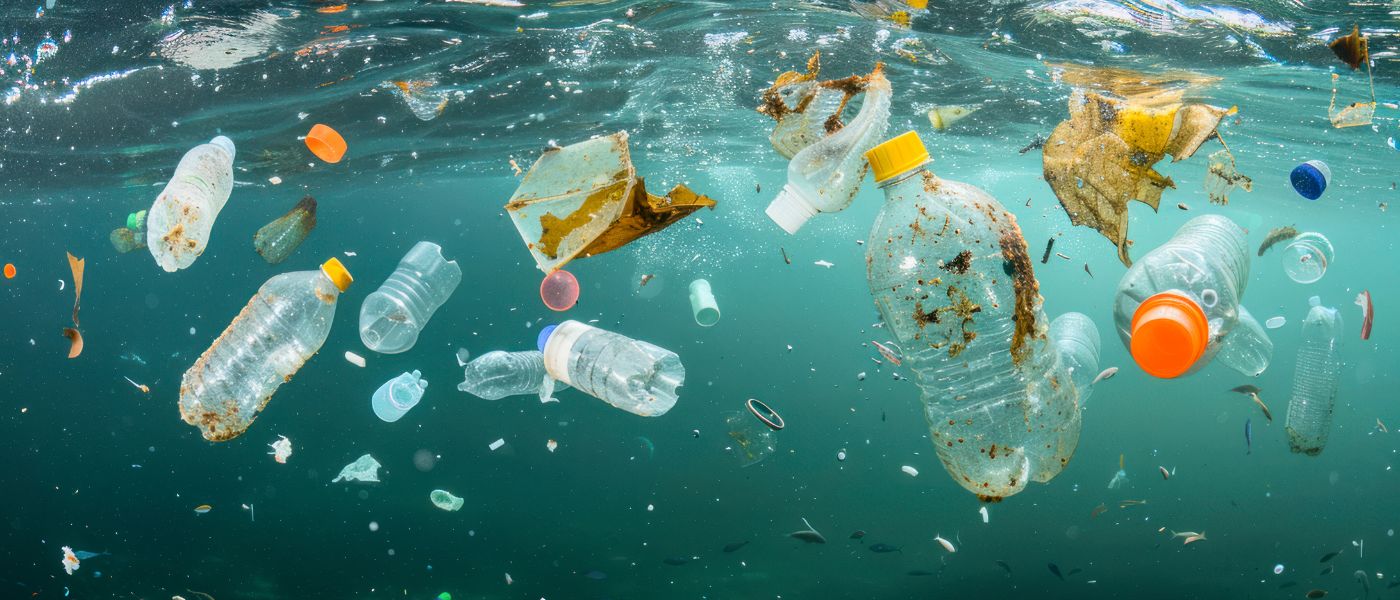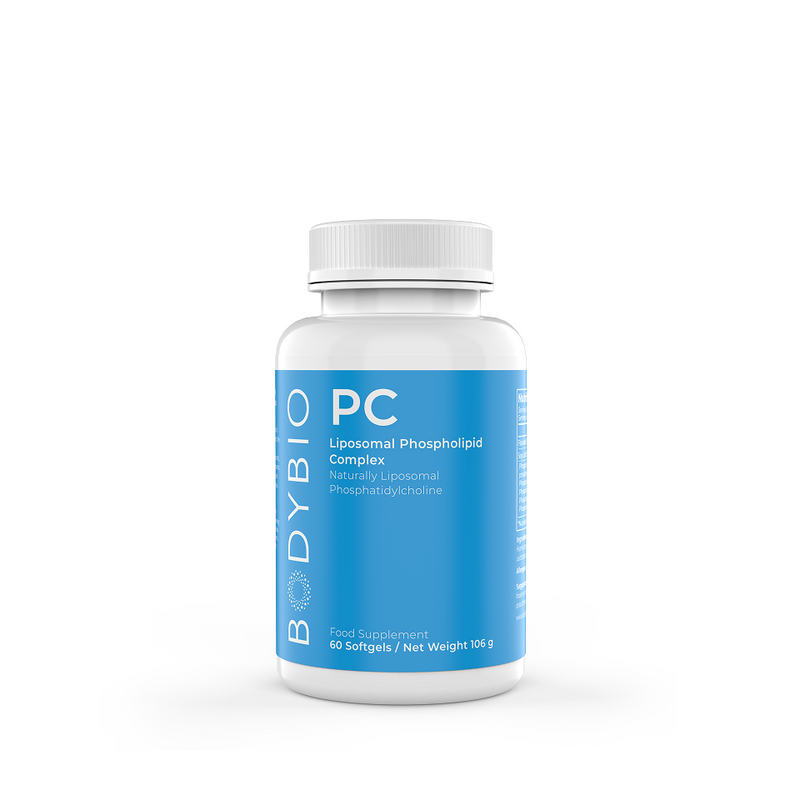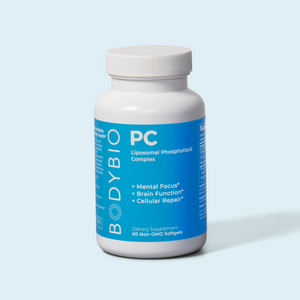What Are Microplastics and How Can You Detoxify Them?
Key Takeaways:
Key Points:
- Microplastics are everywhere (and for the most part, unavoidable). The best way to defend against microplastic exposure is to support your cell membranes and prioritize healthy detox pathways.
- Potential side effects of microplastic exposure include hormone disruption, fungal infections, poor immune system function, and infertility.
- Some ways you can detox microplastics from your system include infrared sauna use, phospholipid supplements, and extra liver support (through supplements like liposomal glutathione).
You’re seeing the data.
Researchers recently found microplastics in human placentas — meaning children are exposed to them before they even exit the womb.
Other evidence suggests that microplastics in the human bloodstream and reproductive organs are linked to declines in fertility.
When plastics were first introduced, they were considered harmless. Even studies that tested for the presence of microplastics didn’t find any reason to remove them from the environment. So, we continued to pack our lunches in plastic bags and wear plastic-derived workout clothing.
But here’s the problem with microplastics…they’re not so easy to track down.
It wasn’t until a few years ago that new technology uncovered plastic in the human bloodstream. Now, we’re detecting nanoplastics (or plastic particles that are even smaller than microplastics).
We’re still learning about the impact of microplastics and nanoplastics on our bodies. But here’s one thing we do know: They can enter the cell.
In a world full of plastic, is it really possible to protect our cells from these environmental toxins? The answer might surprise you…
Table of Contents:
- What Are Microplastics?
- Side Effects of Microplastics
- Avoiding Microplastics vs. Detoxing Microplastics
- How to Detox From Microplastics
- Help Your Cells Defend Against Microplastics
What Are Microplastics?
Microplastics are tiny plastic particles that exist in our environment (including our water and food supply). Think of them as “microscopic pollution.”
Everything from our clothes to food containers and personal care products contains plastic. And those plastic items either shed plastic particles or slowly decompose in landfills — leaving an environmental hazard behind.
Microplastics are so common we’ve detected them in both drinking water and rainwater. They’re also found in the human bloodstream, reproductive organs, and even in the air we breathe. It’s enough to make anyone panic, but take a deep breath and don’t toss every plastic item you own just yet.
Microplastics
These are small plastic particles that have been at the center of plastic pollution studies in the human body. Standard microplastics are smaller than five millimeters, usually the size of a dust particle, and difficult to detect with the naked eye.
Nanoplastics
These plastics are even smaller than microplastics — less than 1000 nanometers (for reference, that’s smaller than the diameter of a human hair). While less research has been done on nanoplastics, we know they are especially dangerous because they can enter the cell.
Potential Side Effects of Microplastics and Nanoplastics in the Body
Here are some potential side-effects of microplastics and nanoplastics in the human body (so far). These limited symptoms tell us why it’s so crucial to increase research studies on microplastics and limit plastics in our environment.
- Hormone disruption. Women struggling with high estrogen levels may look to plastic as a contributing factor. Chemicals leaching from plastics can imitate estrogen, causing increased estrogen levels in the bloodstream. This puts added strain on the liver and can hinder its ability to properly detoxify estrogen.
- Fungal infections. Plastic is the ideal habitat for fungal and bacterial overgrowth. Increased infections could be related to high levels of plastic in the body.
- Infertility. High levels of plastic found in human reproductive organs could shed some light on why fertility rates are dropping at record levels.
- Cardiovascular disease. There’s still much more to learn about microplastics and nanoplastics. But for now, initial research suggests they could be connected to an increased risk of heart attacks and heart disease.
- Environmental impact. We simply don’t know the far-reaching effects of microplastics on our environment yet. But we do know they’re contaminating our water and food sources.
These are just a few potential side effects of microplastics. The reality is that we don’t yet know the extent of plastic pollution and how it impacts our daily health. But we’re learning more all the time, especially as public concern around the effects of microplastics grows.
Avoiding Microplastics vs. Detoxing Them
Microplastics and nanoplastics are cause for concern, but avoiding them entirely is out of the question.
Plastic particles travel. They’ve been found in unreached territories — even as far as Antarctica. Lowering your plastic consumption or moving to a remote area can only do so much for your health.
The best thing you can do to avoid the effects of microplastics is to help your body defend itself. Open up your drainage pathways, support cellular detox, encourage good liver health, and make healthy decisions about which plastics you allow in your life.
How to Detox From Microplastics
Here are some simple ways you can prepare your body to defend itself against the onslaught of environmental microplastics.
Phospholipids for Cell Detoxification
Phospholipids play a crucial role in maintaining cell function and structure, as they are key components of the cell membrane. They also contribute to cellular detoxification in several ways.
First, phospholipids can gently and gradually trap fat-soluble toxins into tiny fat droplets. Over time, these droplets are transported away from cells and tissues, eventually reaching the digestive tract, where they are expelled from the body.
Secondly, by forming a protective barrier, phospholipids can help regulate which substances — both toxins and nutrients — can enter the cell. This protective function helps prevent environmental toxins from penetrating the cell.
Maintain Good Liver Health
Your liver (aka your primary detox organ) is facing more stress than ever due to the ever increasing onslaught of environmental toxins it has to process. One of the best things you can do for microplastic detox is to support healthy liver function. Hydrate well, eat plenty of fibrous foods, and avoid processed foods.
You might also consider taking liposomal glutathione. Glutathione is a strong antioxidant that acts like a cleanup crew, neutralizing and transforming harmful substances into harmless ones. Once neutralized, it breaks these toxins down into smaller, less harmful compounds, which are then expelled through your kidneys or digestive tract.
Try combining phospholipids with glutathione for comprehensive, round-the-clock detoxification support.
Prioritize Minerals and Electrolytes
The unfortunate reality is that the minerals and electrolytes that should be in our water today are replaced by microplastics and other toxins, like fluoride. Most of our water is highly filtered, chemical-laden, and depleted of these essential nutrients our cells need to function. Intentional mineral and electrolyte supplementation helps our cells function at their best — hydrating, detoxing, and restoring our bodies from the inside out.
Prioritize Healthy Fats
Most fats are either critical to cellular health or toxic to the cells. Processed seed oils, for example, are rancid and promote rapid cellular damage across the body. On the other hand, healthy oils with essential fatty acids are a powerful tool for cell membrane function and detox.
When choosing dietary fats, you should always consider the impact on your cells. You don’t want to give your cells and liver more toxins to sort through. Instead, choose healthy fats (like grass-fed butter, extra virgin olive oil, and BodyBio Balance Oil) that help scavenge free radicals and build functional cells.
Eat Cruciferous Vegetables Regularly
Especially if you struggle with hormone imbalance and estrogen dominance, eating cruciferous vegetables can help you naturally detox. Broccoli, cauliflower, Brussels sprouts, and kale contain a compound that regulates estrogen metabolism. Rich in fiber, these veggies also support healthy liver function, too. The best time to eat them is during ovulation and right before your period, when estrogen levels peak.
Enjoy a Regular Infrared Sauna
Studies have found clear evidence of bisphenol A (or BPA) and heavy metals in human sweat. This should be evidence enough that sweating works — and it is an effective way to support our bodies as environmental toxins rise.
Even if microplastics aren’t leaving us through sweat (we currently don’t have evidence to know either way), regular sauna use can enhance detox pathways and healthy liver function. Both of which are crucial for detoxing microplastics and nanoplastics from the body.
Simple Common Sense Decisions to Eliminate Plastic from Daily Life
Again, you can’t avoid plastic exposure entirely. But making a few simple swaps in your daily life can help lower your toxic burden and your overall exposure to plastics.
- Buy natural fiber clothes. Cheap workout clothes and fast fashion pieces are filled with microplastics. You can support your body (and the environment) by prioritizing natural fibers, like organic cotton, silk, alpaca, or wool.
- Don’t eat from plastic containers. Do your best to avoid plastic containers, especially those that go in the microwave.
- Don’t use plastic wrap. Opt for beeswax wraps or a reusable dish towel to cover bowls and glass containers.
- Buy plastic-free food. Whole foods typically include less packaging in general. But when you have the option to choose, support businesses that use plastic-free packaging.
- Filter your water intentionally. Preferably with a glass or stainless steel filtration system.
- Drink from a glass or metal water bottle. Whenever possible, avoid plastic water bottles, which have shown extremely high levels of microplastics and nanoplastics.
Start with just one or two new habits to minimize plastic in your daily life. Choosing less plastic gives your cells and tissues more room to breathe and supports the environment at the same time.
Help Your Cells Defend Against Microplastics
Exposure to microplastics is nearly unavoidable.
But what if they entered your bloodstream and left just as easily, without impacting your cells?
Strengthening the cell membrane is the best way to make sure nutrients enter the cell (like minerals and healthy fats) and toxins like nanoplastics stay out. We can do this with phospholipids — healthy fats that make up almost sixty percent of the cell membrane.
Unlike binders and other temporary detoxes, phospholipids work by capturing fat-soluble toxins into tiny droplets, which are then excreted from the body. And as long as you supplement consistently, they support cellular detox every single day. It’s 24/7/365 protection for your cells, not just a monthly or quarterly cleanse.
Phospholipids provide a nutrient-focused approach that enhances your detox pathways and cellular wellness in the modern era. When plastics enter the bloodstream, you will have the exact tools in place to flush them out before they get into your cells.
Ragusa, A., Svelato, A., Santacroce, C., Catalano, P., Notarstefano, V., Carnevali, O., Papa, F., Rongioletti, M. C. A., Baiocco, F., Draghi, S., D'Amore, E., Rinaldo, D., Matta, M., & Giorgini, E. (2021). Plasticenta: First evidence of microplastics in human placenta. Environment international, 146, 106274. https://doi.org/10.1016/j.envint.2020.106274
Qian, N., Gao, X., Lang, X., Deng, H., Bratu, T. M., Chen, Q., Stapleton, P., Yan, B., & Min, W. (2024). Rapid single-particle chemical imaging of nanoplastics by SRS microscopy. Proceedings of the National Academy of Sciences of the United States of America, 121(3), e2300582121. https://doi.org/10.1073/pnas.2300582121
Hu, C. J., Garcia, M. A., Nihart, A., Liu, R., Yin, L., Adolphi, N., Gallego, D. F., Kang, H., Campen, M. J., & Yu, X. (2024). Microplastic presence in dog and human testis and its potential association with sperm count and weights of testis and epididymis. Toxicological Sciences, 200(2), 235–240. https://doi.org/10.1093/toxsci/kfae060
Marfella, R., Prattichizzo, F., Sardu, C., Fulgenzi, G., Graciotti, L., Spadoni, T., D’Onofrio, N., +35, & Paolisso, G. (2024). Microplastics and nanoplastics in atheromas and cardiovascular events. New England Journal of Medicine, 390(10), 900–910. https://doi.org/10.1056/NEJMoa2309822
Higdon, J. V., Delage, B., Williams, D. E., & Dashwood, R. H. (2007). Cruciferous vegetables and human cancer risk: epidemiologic evidence and mechanistic basis. Pharmacological research, 55(3), 224–236. https://doi.org/10.1016/j.phrs.2007.01.009
Genuis, S. J., Beesoon, S., Birkholz, D., & Lobo, R. A. (2011). Human excretion of bisphenol A: Blood, urine, and sweat (BUS) study. Journal of Environmental and Public Health. https://doi.org/10.1155/2012/185731
University of Oldenburg. (2023, August 16). Oceans release microplastics into the atmosphere. ScienceDaily. www.sciencedaily.com/releases/2023/08/230816114128.htm








